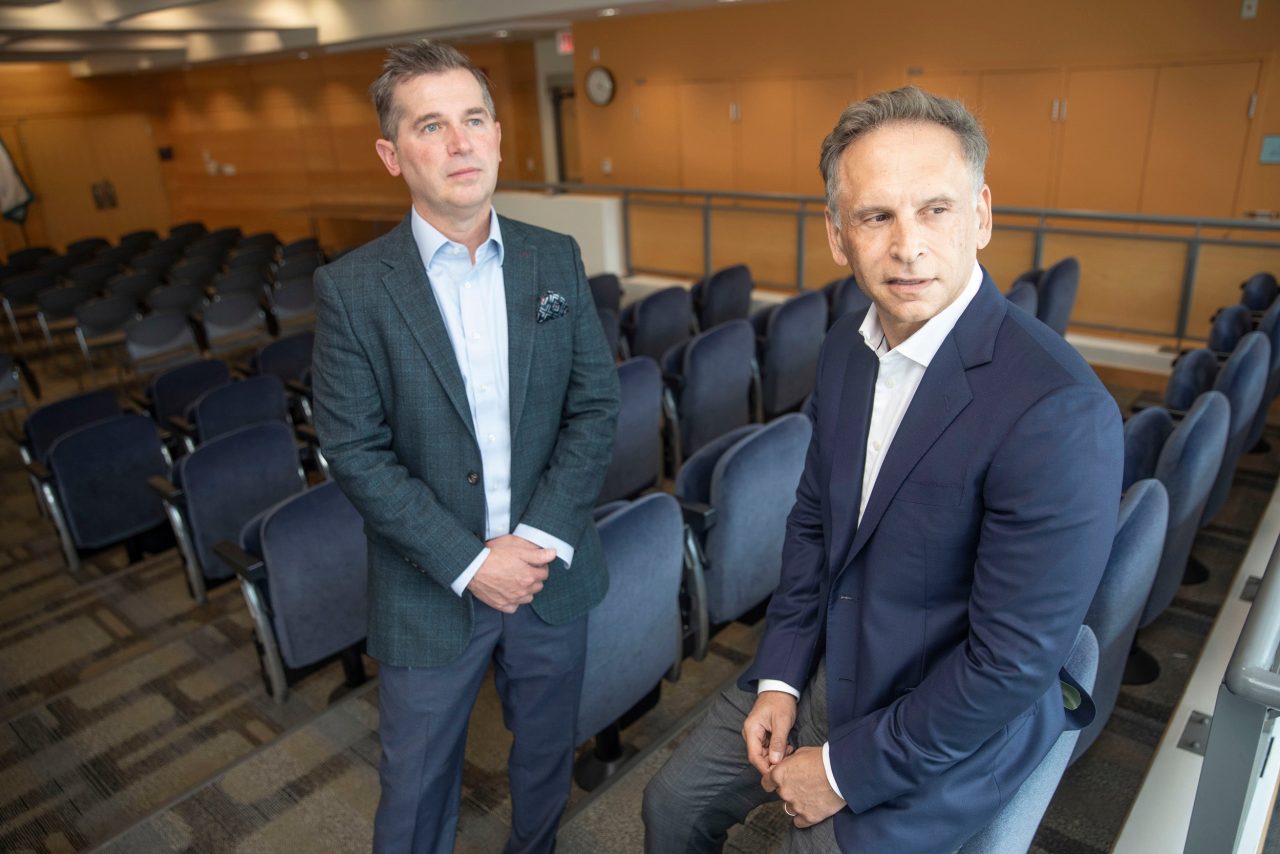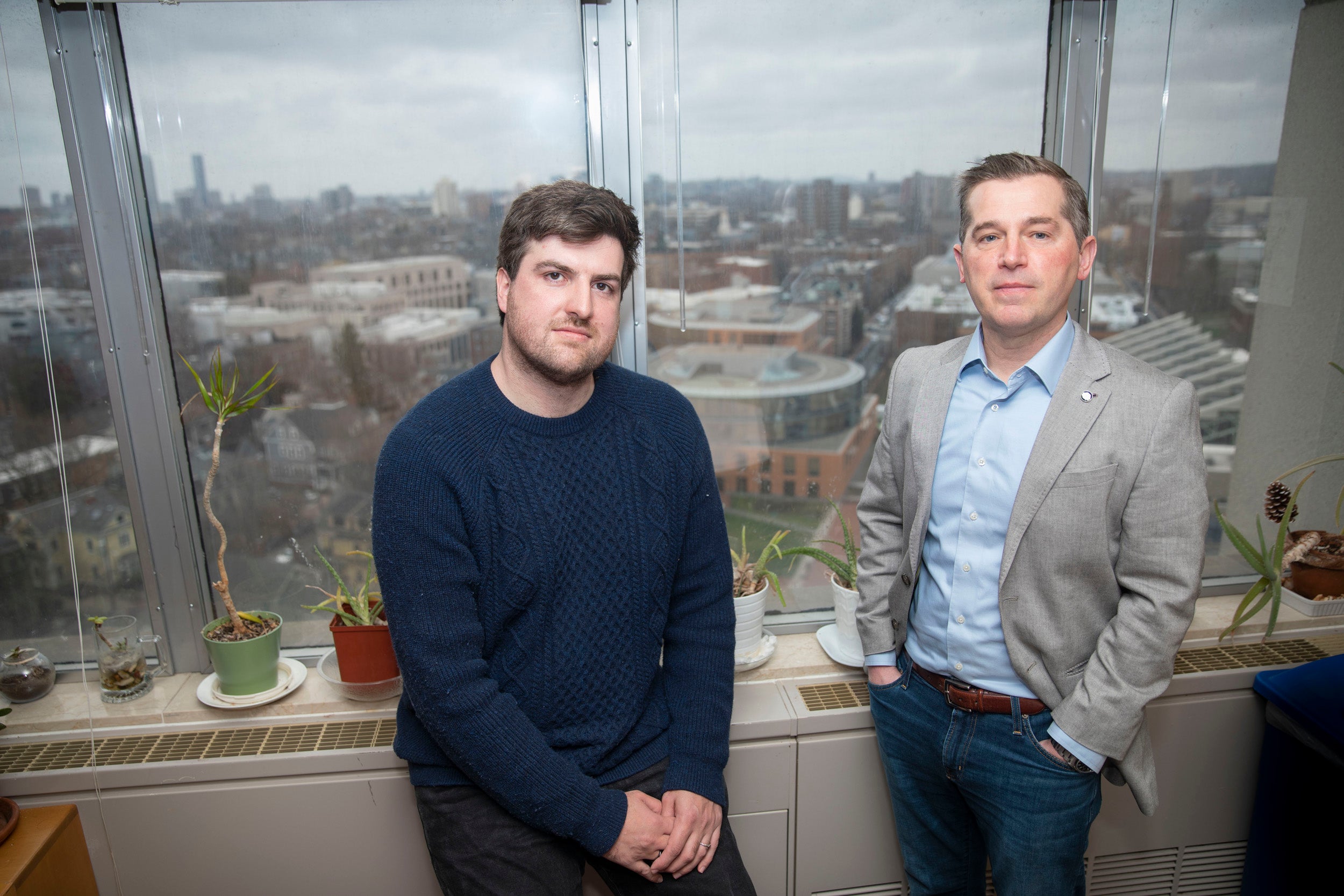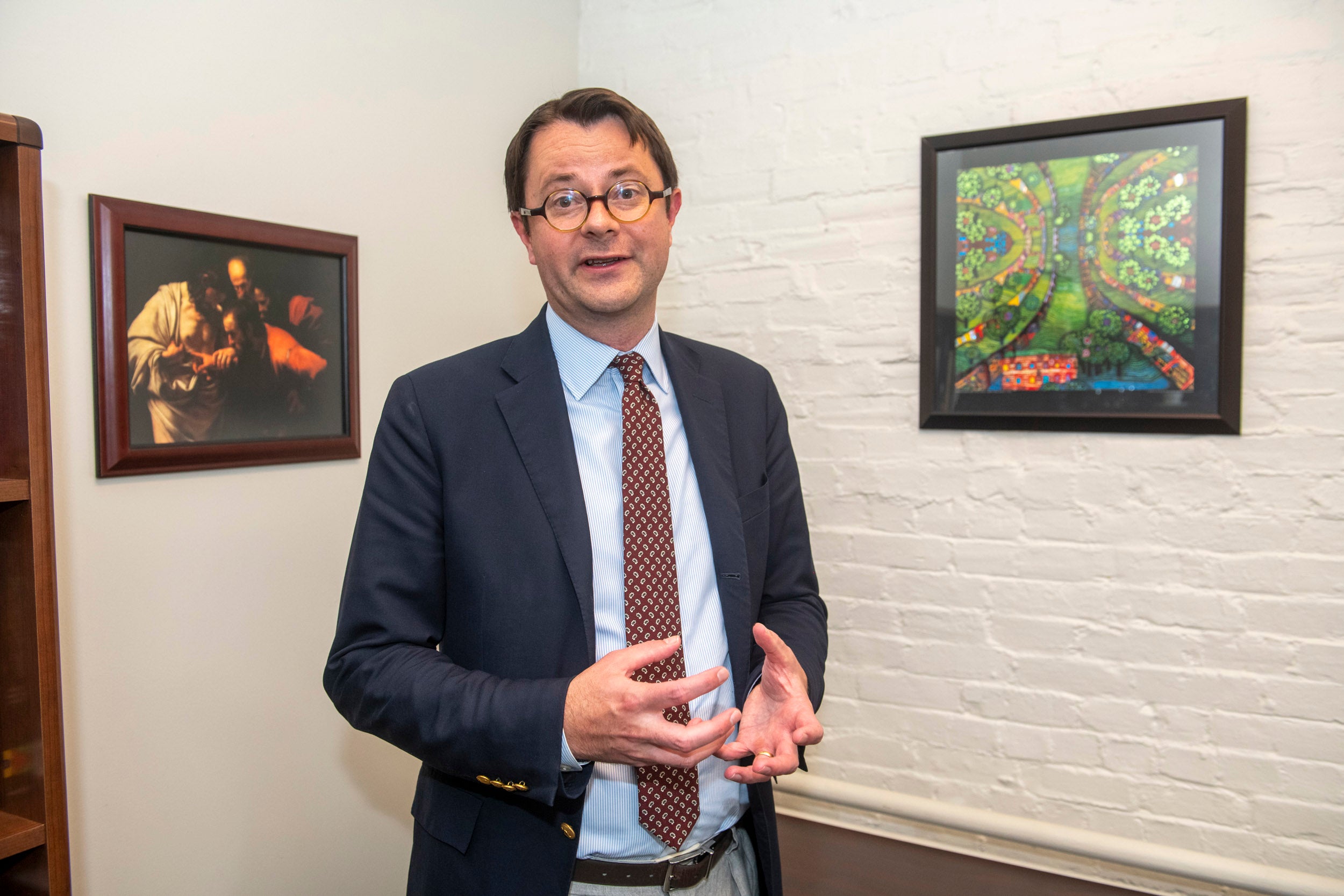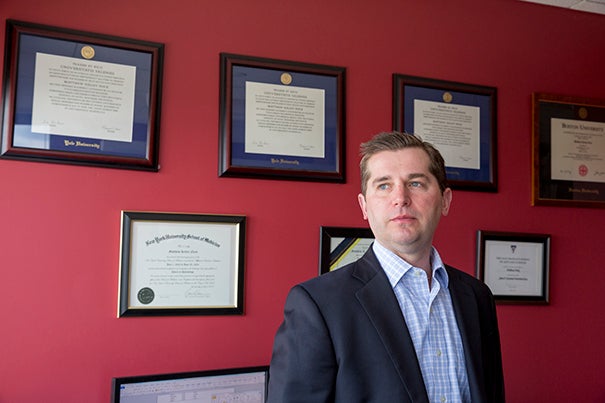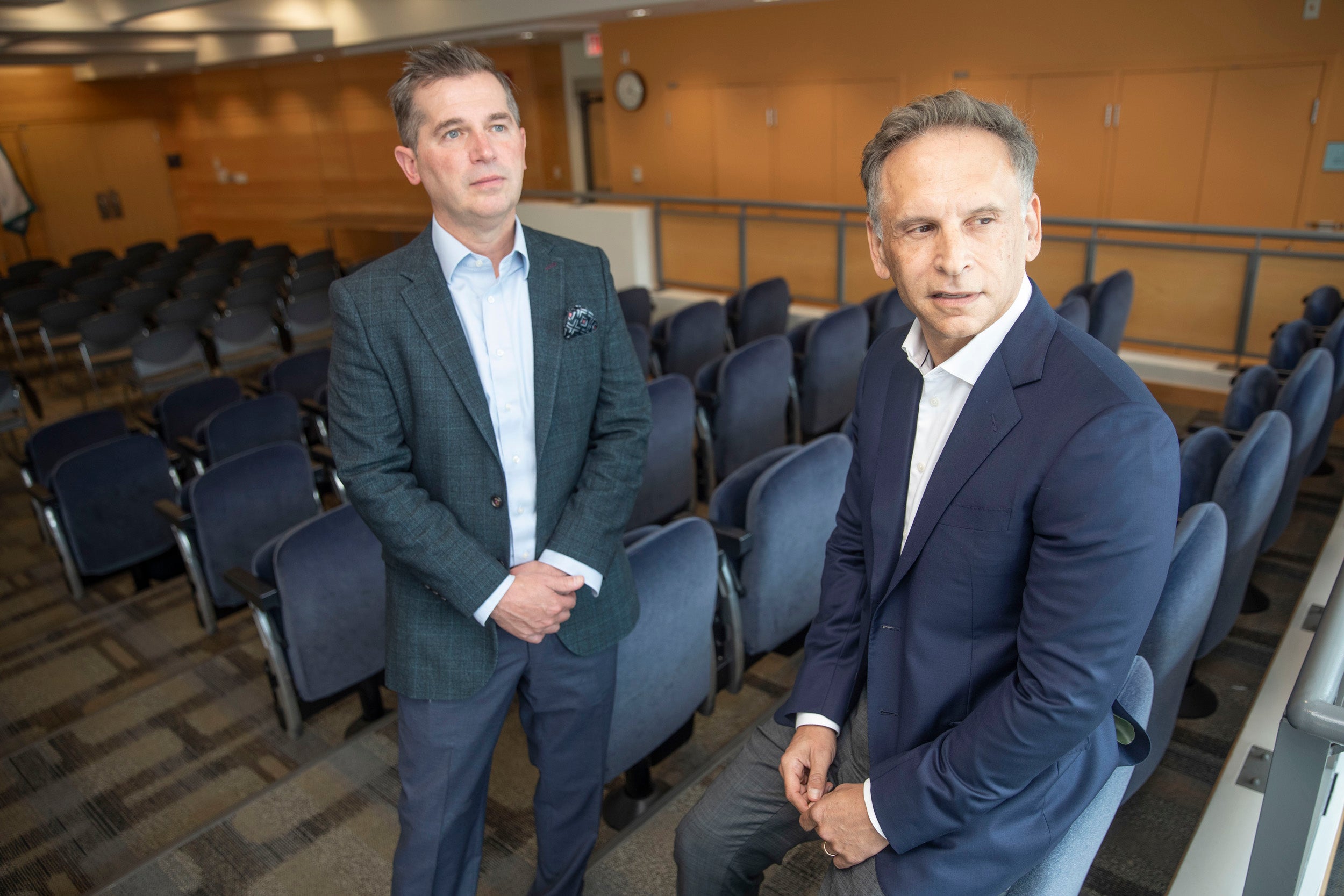
Matthew Nock (left) and Jordan Smoller are co-directors of the Center for Suicide Research and Prevention.
Kris Snibbe/Harvard Staff Photographer
Health
Seizing the chance to stop a suicide
New Harvard-MGH center to provide clinicians with lab-tested tools for identifying, treating those most at risk
At least 49,449 Americans took their own lives last year, according to the Centers for Disease Control and Prevention, setting a record for annual suicides in the United States.
“It’s now the second-leading cause of death among young people,” said Jordan W. Smoller, Jerrold F. Rosenbaum Endowed Chair in Psychiatry at Massachusetts General Hospital and a professor of psychiatry at Harvard Medical School. “Suicide rates have increased 35 percent over the past two decades.”
Researchers like Matthew K. Nock, Edgar Pierce Professor of Psychology, have made significant strides in identifying risk factors and effective prevention strategies. “But there’s a pressing need to bring these things into clinical practice and really start to bend the curve,” Smoller said.
Working to fast-track the most promising interventions is the Center for Suicide Research and Prevention at Harvard and MGH, launched last month with the help of a $17 million grant from the National Institute of Mental Health. “The mission is to use recent innovations in suicide science to propose and test improvements in how suicidal patients are identified and treated,” said Nock, who also chairs Harvard’s psychology department. He and Smoller will serve as co-directors of the new initiative.
About half of all people who die by suicide in the U.S. visit a health care provider in the month before death.
Much of the center’s initial work will happen within hospital systems, which Smoller described as “crucial venues for prevention.” About half of all people who die by suicide in the U.S. visit a health care provider in the month before death. Approximately 40 percent visit an Emergency Department during the 12 months prior.
“We don’t have to go out looking for these folks,” Nock noted. “They’re self-identifying. What we don’t know is which people coming through our clinics are most at risk.”
Over the past several years, Nock and Smoller have partnered with colleagues to develop and test a machine-learning tool for assessing suicide risk in patients seeking emergency care at MGH. The results were published last year in JAMA Network Open.
“We found we can identify which patients are most at-risk for suicide with a much higher degree of accuracy than clinicians can do on their own,” Nock summarized.
Next up: Deploying the new center’s resources to test the effect of providing the algorithm to hospital clinicians. As demand for psychiatric care soars, Nock hopes the technology will assist emergency physicians determine who to admit and who can be treated at home. If suicides drop, he added, the center will work to implement the tool at more hospitals.
“Suicide rates have increased 35 percent over the past two decades.”
Jordan Smoller
The MGH-Harvard project is part of a larger suicide-reduction effort by the National Institute of Mental Health, which in 2020 announced that it would provide funding to back a handful of practice-based research centers across the U.S. The centers were conceived as consortiums where front-line clinicians would collaborate with researchers in psychology, psychiatry, public health, computer science, and statistics.
“The thing to convey is just how many at-risk populations are represented across these centers and how many strategies are going to be tested at different points in the chain of care,” said Stephen O’Connor, chief of the Suicide Prevention Research Program in NIMH’s Division of Services, which has now funded a total of seven practice-based research centers.
Another key local partnership involves the Samaritans, the Boston-based nonprofit whose volunteers staff the 988 Suicide and Crisis Lifeline for much of Massachusetts. “We recognize that some of the evidence-based prevention strategies cannot be easily implemented right now in the healthcare system,” Smoller said. “So, we thought we could turn to an organization with tremendous expertise in dealing with individuals in crisis.”
A pilot project will provide patients whom the algorithm deems high-risk with a Samaritans volunteer — “effectively a coach,” Smoller said — to help implement evidence-based interventions (like creating a personal safety plan) for a full three months following discharge from the hospital. “It’s a new approach to suicide prevention combining some of the tools we have developed with support and problem-solving during this very high-risk period,” Smoller said.
Another pilot will deploy smartphone technology to monitor levels of distress over that same three-month timeframe. “It’s what’s called a micro-randomized trial,” Smoller explained. “People will get one of a pair of interventions at any given time, and then we’ll be able to see which of those is most effective — and for whom.”
When discussing the urgency of suicide prevention, Nock is quick to point to falling mortality rates over the past century for other leading causes of death, including heart disease, cancer, and HIV/AIDS. All this while we’ve gone backward on reducing deaths by suicide.
“What’s exciting about this opportunity,” he said, “is the chance to finally make big change.”


